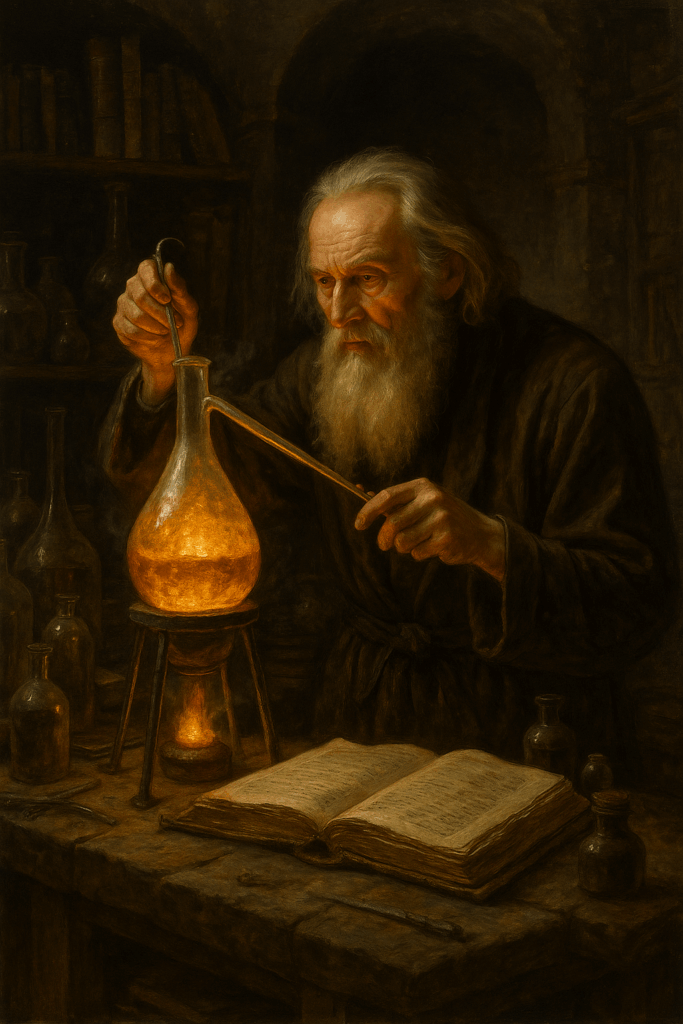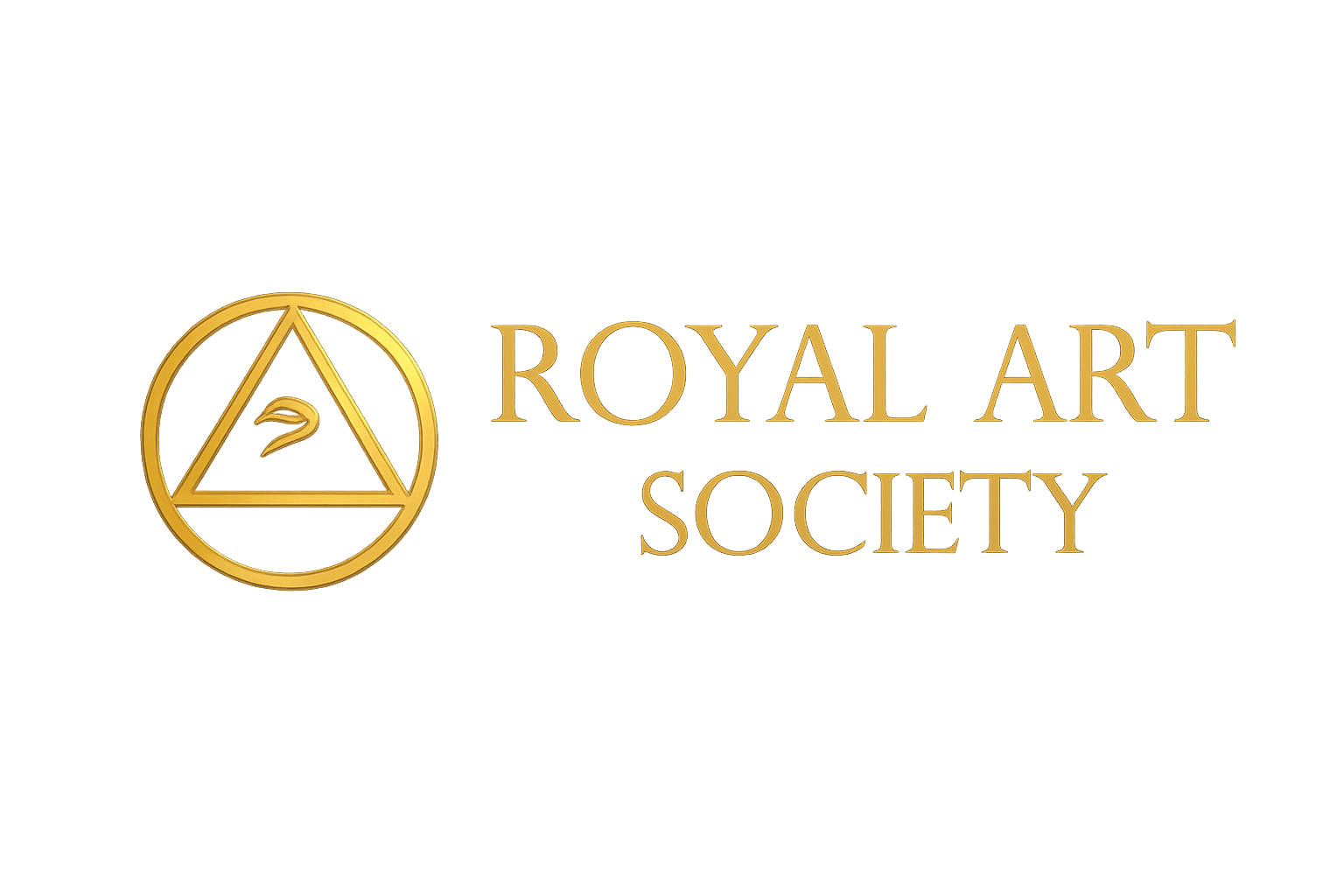Master Alchemist: Grade of Man (Homo Sapiens)
THE MASTER ALCHEMIST’S HANDBOOK
A GUIDE FOR THE MASTER ALCHEMIST
Part 1: Orientation: Intellect and Memory – Worldview and Mnemonic Map

The Alchemist is recommended to spend the year in research as outlined by the Royal Art Curriculum, Syllabus III and the Alchemist’s Library.
Topic examples include but are not restricted to:
Alchemy, Daoism, Yijing, Confucianism, Zen Buddhism, Hinduism, Tantric Yoga, Egyptian religion, Classical mythology, Hermetic philosophy, Kabbalah, Judaism, Gnosticism, Russian Orthodoxy, Roman Catholicism, Anglicanism, Celtic Mythology, Nordic mythology, Enlightenment philosophy, Freemasonry, Rosicrucianism, Realism, Syncretism, Transcendentalism, Thelema, Science, Capitalism, Communism, Humanism, and atheism.
Each book from the Alchemist’s Library is studied by a quick reading through the forward and introduction of the work, with random readings from the body of the work, emphasis on the first and last chapters. This is the most efficient way of acquiring a superficial view of the work. One masters the tradition in which one was raised as a child, and, if there is a difference, the predominant tradition of one’s government, country, or people. Only then will one be prepared to go beyond that.
The Alchemist studies the spiritual anatomy and the modes of healing and empowering self and others, including work with life-force, visualization, and meditation. The Alchemist will be invited to pass to the Degree of Heaven, the Third Degree, on or about the next Winter Solstice at midnight.
THE EIGHTH MICROCOSMIC ALCHEMICAL ORGAN: INTELLECT
The Alchemist studies the nature of knowledge, reason and the human intellect. The Alchemist will explore the foundations of thought. The Alchemist shall be offered drills which have been designed to clear away any illusions regarding thought, and to reveal to the Alchemist the essence of associative reasoning.
Every learned association of the Alchemist will be subject to proof of a contrary association. In other words, the Alchemist will learn to balance each biased thought with its opposite, and to finally come to the realization (not merely the knowledge) of the perspective wherein all thoughts or beliefs are equally true and equally false, built on the illusion of separateness.
The Alchemist will learn to distinguish between fallacy and reason, decisions based on emotion and decisions based on reason, and forms of critical thinking and careless thought. More advanced study will reveal the relationship between the intellect and the state of pure awareness. It is sufficient here to say that the intellect and emotion are two great barriers to pure consciousness.
Stemming from the Book of the Royal Art are the various arts and sciences. Despite the shortcomings of knowledge, the Alchemist of the Royal Art Society is a scholar, for matters of survival. The Alchemist is required to seek a liberal education, to develop a comprehensive world-view, and to choose the field or fields of specialization that best fits the alchemist’s preferences and abilities.
The holistic liberal arts education has been forgotten or neglected by the mainstream educational institutions and society has suffered therefrom. The Royal Art Society adopts it as an absolute requirement. Without this practice, regardless of transference of authority or title, an individual or organization cannot claim to practice Royal Art Society approved alchemy.
The Royal Art Society’s philosophy of education resembles that of the Montessori philosophy. It is holistic, independent, natural, and relies on the student’s inner guide to produce a self-disciplined, spontaneous and creative individual. The foundation is an orderly environment and the use of practical yet aesthetically beautiful multisensory materials.
The student sets his or her own pace; natural learning is fun and self motivated. It is not a burden that leads to exhaustion, but it is energizing, and contributes to self confidence and happiness. There is no inherent competition in the learning process. Success in competition steadily grows in the alchemist’s real accomplishments.
STEP EIGHT OF THE ALCHEMIST’S CURRICULUM:
BUILDING THE WORLDVIEW
It is possible to have conscious control of one’s mental associations. The alchemist’s cosmological overview puts everything into context to observe its true proportions. Attention is drawn to the meaning of the whole subject; the parts of the whole are indirectly absorbed as peripheral material. An organized connection must be made between new information and old. Thus one will remember facts.
Landmarks in history, basic mathematic principles and other basic facts are committed to memory. The alchemist learns principles or patterns rather than memorizing and eventually forgetting vast amounts of material. Concrete images, not abstract images, build strong associations. Therefore, the worldview of the alchemist is built as a microcosmic model of the real world, for practical purposes.
The short-term memory can only hold about seven items so items are learned in groups such as how one learns the alphabet. Learning is a receptive process that precedes recall, and recall is an active process. The best environment to recall material is the same as that in which it was learned. First and last things learned are easiest to recall. Things outstanding to attention are easiest to recall. Royal Art Society inner alchemy utilizes these principles in its visualizations, the elixirs of immortality.
The imagination and will are engaged through visualization. Original awareness of something is the alchemical union of pure awareness and a subject of learning: one must be aware of something and have it register in the first place if one wants to recall it, later. Repetition, alone, is ineffective. Rhythm and rhyme stir body reactions, so the alchemist has often used verse or poetic prose to communicate his recipes.
Subjects are best learned as interactive visualizations, the more detailed and developed the better. The more senses involved, the better, especially the visual, auditory and kinesthetic senses. Therefore the alchemist uses symbols: ideas and words associated with an icon; and recitation of scripture, articulating the words to be learned.
Emotion is engaged using visualizations or visualized stories with emotionally vivid (dramatic, comic or vulgar) interactions between otherwise unconnected subjects. This is explored in Colin Rose’s Accelerated Learning, Dell, 1987.
The alchemist unites the subconscious with the conscious mind. Subconscious factors of learning include: Expectations of difficulty and performance, feedback and presentation.
Learning does not get more difficult with progress. Each lesson is just as easy as the first lessons. Learning creates brain capacity just as every exercise creates a greater physiological capacity. Power of suggestion; positive expectation and positive thinking: One’s perceived and actual performance is affected by one’s own expectations and other’s expectations. One must have belief in actual possibility of success and belief in one’s own potential of success.
The alchemist consciously cultivates his or her own feedback. “Success breeds success.” One deliberately recognizes one’s successes. Motivation or meaning is often found in giving oneself a tangible reward, but the alchemist keeps always his eye on the ultimate goal: the Great Work.
The medium is part of the message. A speaker’s background and presentation suggest information as important to their audience as the emotional and intellectual content of the message presented. The greater part of communication is subconscious. The alchemist knows that their success depends largely on image and reputation. They study psychotherapy’s use of archetypes, and invoke the forces necessary to their craft and image, using this to advantage whenever possible. An alchemist sees to his or her own reputation.
MODEL STUDY PERIOD
Below is one method of studying. It may be used in full or in part, taking short or long breaks between exercises, as a supplement to one’s regular study practices. The alchemist may walk around while they read or listen to material. They may say poetry, chant or sing. The atmosphere must be energized and the air well circulated.
The alchemist loosens up by shaking their limbs gently and naturally, rotating their shoulders and turning their neck, completely relaxed. They take a few deep breaths. Beginning with an awareness of the breath, they maintain a detached observation or awareness of thoughts, mental images and other sensations. They recite an Elixir. They then review the core ideas of their subject to establish context.
Next, they focuse their mind on a single point and generates a pleasant experience.
When calm and focused, the alchemist looks over the material to be learned for an overview. They read aloud the vocabulary and definitions to be learned, then look over the material to be learned, just stealing glimpses at words and definitions.
The alchemist creates, and at this point reviews, a Memory Map that involves pictures and words. They read the material aloud quietly.
They may then play a musical elixir, such as baroque, Classical or Indian sitar music, which have a scientifically proven calming, healing and strengthening effect on plants and animals, including human beings. They relaxe. They enjoy the music and passively look at the material they are learning. Then they review their Memory Map using colored pencils to involve himself in it. They sit to the side, and recall it visually, imagining it.
At university the students hear a lecture; once the alchemist likewise hears a verbal presentation of the material, they can individually hear the material in their head, and rehearse it at this point. They construct a new image of the material in their head and visualizes it as vividly as possible. They practice presenting the material verbally to their intended audience and then creates realistic dialogue, asking questions and answering them as if in a real conversation. They may play a game that involves the material or study in a group.
The alchemist may finish with a serious rehearsal of the material- an exam. One who is interested in truly learning one’s material reviews this material for a few minutes in one week, one month, in six months and periodically ever after. The alchemist organizes the whole of his or her subjects and creates a schedule that accommodates each of them. A framework for this is developed in the Royal Art Society Curriculum and Alchemist’s Library.
Where to Pursue Your Quest for Wisdom:
A List of Key Sources
NEXT:
Part 2: Understanding – MetaHub
Part 3: Wisdom – Curriculum: Syllabus III
The Immortal or Illuminatus: Grade of Heaven
The Third Degree

